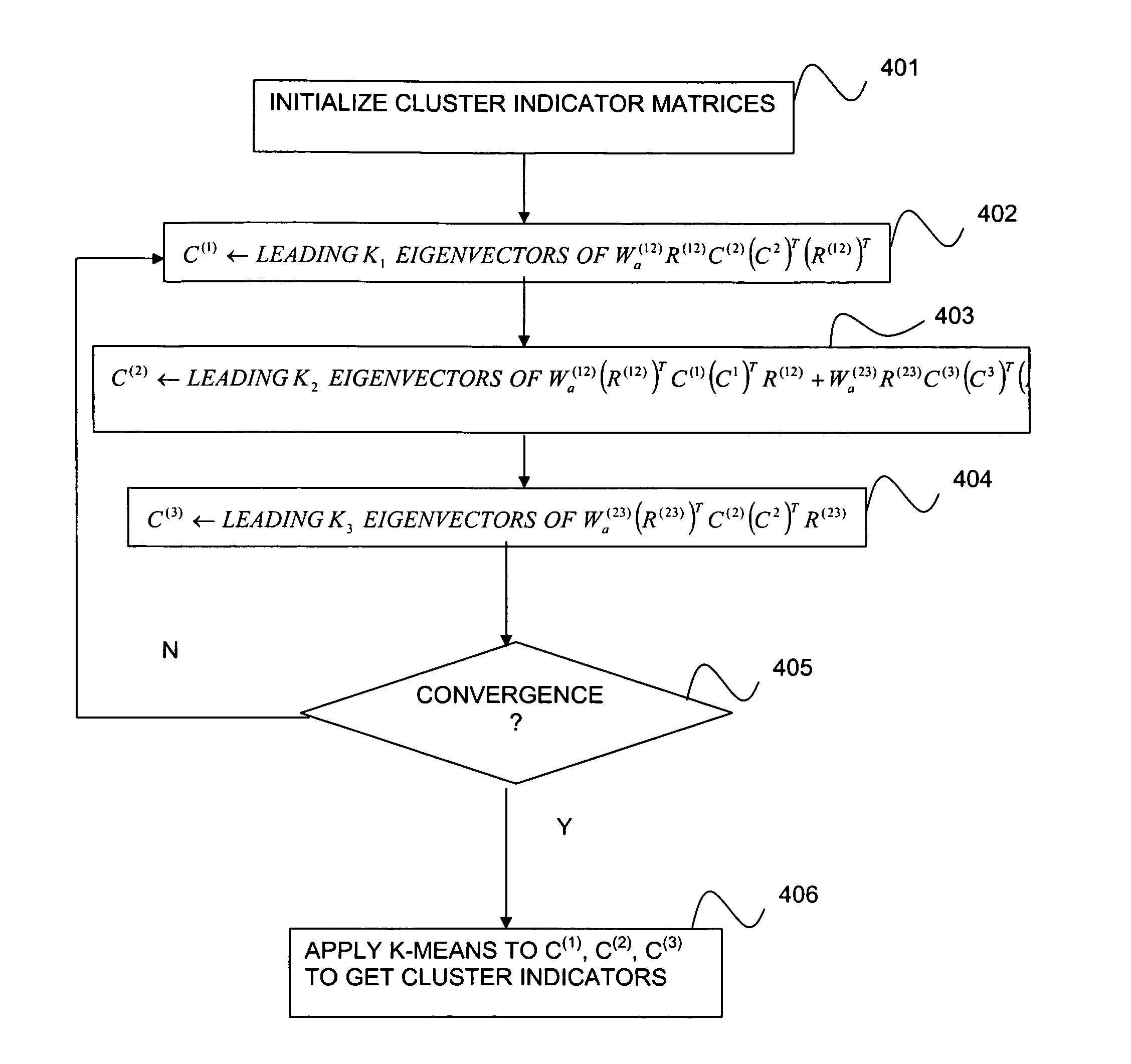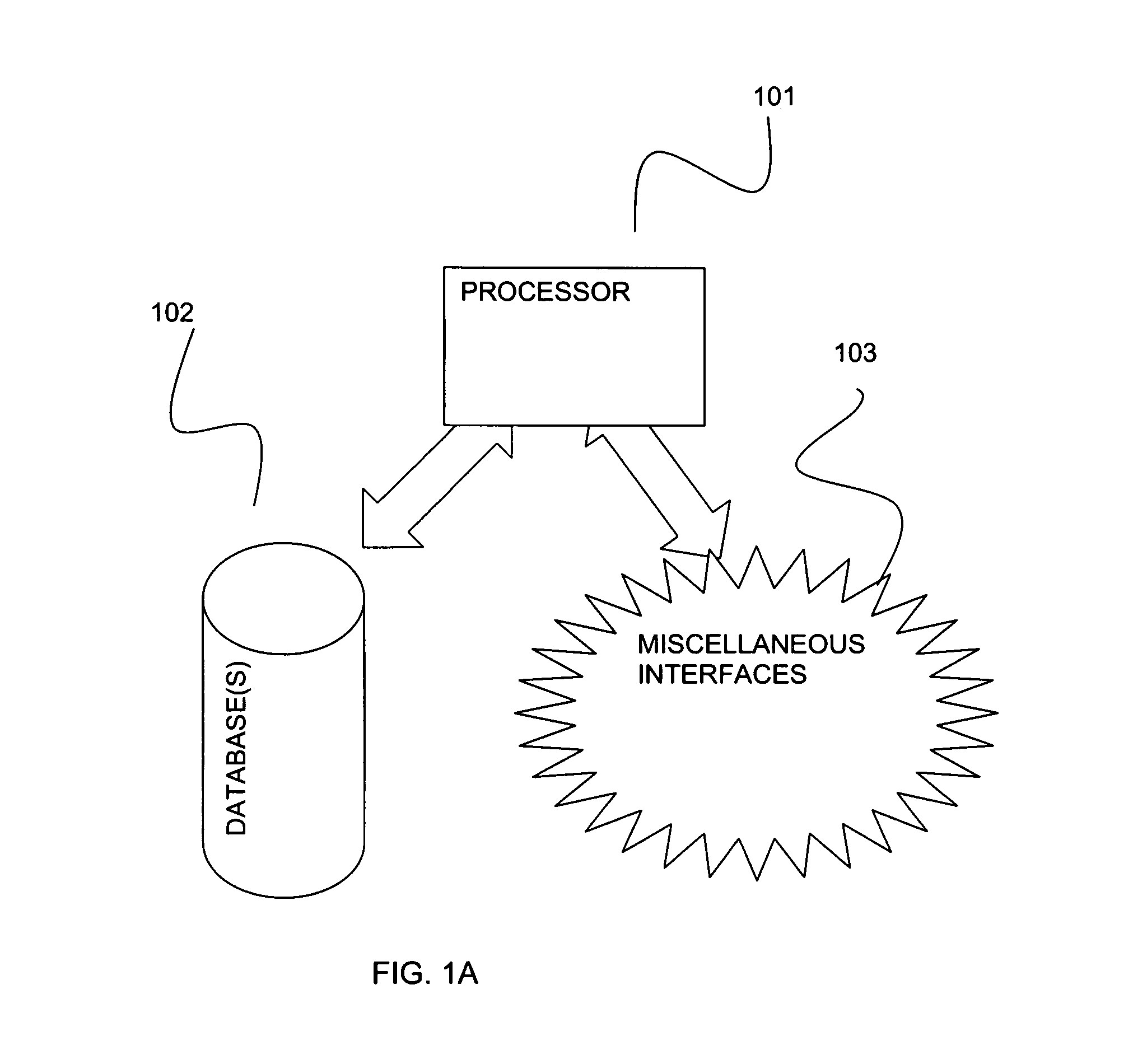Spectral clustering for multi-type relational data
- Summary
- Abstract
- Description
- Claims
- Application Information
AI Technical Summary
Benefits of technology
Problems solved by technology
Method used
Image
Examples
Embodiment Construction
[0101]This description will start with a simplified example and proceed to a more formal treatment.
[0102]The term “spectral clustering” is defined herein as an algorithm that clusters data objects using eigen decomposition.
[0103]Throughout the specification and claims herein variables are used. The use of these variables does not imply that other letters, numbers, or characters could not be used to represent the same concepts. The purpose of the variables is as a shorthand notation to avoid having to repeat cumbersome phrases, not to limit the scope of the specification or claims.
[0104]FIG. 1A a shows a computer system suitable for operating the invention. It includes at least one processor 101, at least one storage device 102, and miscellaneous interfaces 103. The processor 101 may be of any suitable type such as a PC, a server, a mainframe, or an array of processors working in parallel. The storage device 102 also may be of any suitable type, including magnetic, electronic, and / or...
PUM
 Login to View More
Login to View More Abstract
Description
Claims
Application Information
 Login to View More
Login to View More - R&D
- Intellectual Property
- Life Sciences
- Materials
- Tech Scout
- Unparalleled Data Quality
- Higher Quality Content
- 60% Fewer Hallucinations
Browse by: Latest US Patents, China's latest patents, Technical Efficacy Thesaurus, Application Domain, Technology Topic, Popular Technical Reports.
© 2025 PatSnap. All rights reserved.Legal|Privacy policy|Modern Slavery Act Transparency Statement|Sitemap|About US| Contact US: help@patsnap.com



